Micro and Macro Approaches of Market Economics
March 30, 2018 Leave a comment
There are a few fundamental differences between Market Economics a pro-market balance Economics: pro-market development theory, and the Capitalism, Social Capitalism, and Communism, a using pro-supply Economics theory that varies from pro-business trickle-down to a vastly involved into business governments of the Communism but yet pro-supply theories on both Micro and Macroeconomic levels.
Market Economics uses free competition self-adjusting Micromarket i.e. Microeconomic approach; whereas, aggressively and artificially adjusted through the invisible hand National and International financial institutions and governments Macromarket i.e. Macroeconomic multiple approaches. An ‘as it comes; as it goes’ Market Economics pragmatically boosting business activities to create and maintain full employment, self-employment by using environmentally friendly technics, technologies in farming, industrial production, infrastructure, services under very limited inflation/deflation.
The possibility to employ Market Economics without prompting high inflation and recessions has come with the expanding Globalization and rising Productivity that have given to markets i.d. economies the abilities to prompt Market Development without prompting such inflationary forces when properly used. Generally the Economic Trend of pro-Supply, as mentioned before, has evolved into a pro-Demand, Market Equilibrium Trend, even though this could be considered a Market Possibilities for some underdeveloped Markets as a result of lower standard of living, low consumption; however, if properly used on global scale a Market Economics could accelerate such Trend that basically means that these markets could have relatively fast Market Development without strong inflationary forces as it has been always the main issue, obstacle. The idea that the processes of globalization and technological, structural improvement of all spheres of business to boost underdeveloped, impoverished markets are not achievable nether by giving more power to that large businesses and investors nor by giving to more market involvement to the governments! And therefore, neither Capitalism nor some kind of Socialism could provide the necessary structures. The 21st Century’s global economic developments of rising debt, deteriorating Middle Class or not generating of new such, the rising poverty with the exemption of China, the ongoing pollution and global warming, the chronic unemployment and lack of business opportunities, the rising nationalism, and radicalization clearly state the inadequacy of the pro-supply Economics.
Currently, China could be considered as the best performer, as e result of its employing an ‘as it comes; as it goes’ economic policies to targeted areas, regions, industries through subsidies, tax breaks, investment, lower lending rates; such approach, however, is not used on the entire economy range whereas some kind of social-capitalism of a pro-Supply trickle-down economics prevails. Thus, if Market Economics is used on a general scale it would much better boost business, employment, market development than lacking individual freedoms, thus democracy would provide better conditions for long term successful market development.
Advanced Market Economics is founded on strict Rule of Law in Business and Environmental Protection along with enhanced strict Market Agents: that would succeed high Market Security thus allowing lower lending rates and better conditions for direct investment. The targeted market conditions conclude deleveraging the advantages large businesses and investors have over the SME and investors. On a micromarket level the maximum effective market competition is paramount to avoid exaggerations and redundancies; however, on a macromarket level recessions, sharp inflations/deflations must be targeted by ‘as it comes; as it goes’ approaches, thus, from one side the macro approaches are to boost business employment, business and also preventing recessions by using fiscal, monetary, restrictions, stimulus packages, quantitative easing, etc. A Market Economics approach is not limited by Debt, Debit/Credit restriction more like tagged to Inflation/Deflation variances. Because the 21st Century markets are preliminarily in organic farming, environmentally friendly approaches in services, tourism, etc. that must overwrite Debt, Debit/Credit restrictions to save Earth by alleviating poverty that is considered the most uncontrollable hard to fix sources for pollution: usage of old vehicles, fossil fuels heating, related deforestation, farming, garbage disposal; Poverty must be considered the main and most uncontrollable at the moment polluter that if Earth is to be saved must be confronted and dealt with it head-on.
The main problem of balancing the free competition Micromarket could be succeeded with mostly artificially balanced Macromarket
Table 1 Demand versus Supply under Market Leap Q1 – Q2
The condition for Market Leap positive effect on the Market Development is one that does not prompt Inflation/Deflation that only could be succeeded if the Market is part of the Globalization and if the Demand (D) to Supply (S) is taken in consideration when such Market Leap is planed. On a Macromarket level, such Market Leap could be executed by using a targeted combination of Market Tools such as Quantitative Easing, Subsidies, Low-Interest Lending, Fiscal Breaks, Direct Investment, Monetary Policies. The paramount indicator that such a leap is tagged to is Inflation/Deflation variances that must be anticipated and dealt with indiscriminately. So from one side: you have indiscriminately used Market Tools to prompt business, employment, a building of equity and from another, it is strictly followed Inflation/Deflation restraining by using Market Tools, too. Market Leap is a combination of boosting Demand and Supply simultaneously to succeed accelerated Market Development under very low Inflation/Deflation.
Market Economics cannot be anticipated by using Game Theories: it is much more complex than the possibilities for such; only by using Market Tools as Parameters to balance markets more-or-like in Quantum Mechanics’ theory such a balance is apprehensible!. Even though a straight relation between Market Economics and Quantum Mechanics cannot be made as these are in different fields, philosophically the uncertainty theorized by Quantum Mechanics and fundamental for it is similarly observed, theorized, and fundamental for the Market Economics. (see table 2)
The Market Balance even considered very volatile when artificial Market Tools are used to boost entropy (business activities and consumption simultaneously) with the help coming from the globalized marketplace that has developed extensive supply capabilities can successfully prevent excessive inflation/deflation; however, any kind of protectionism is counterproductive setting up the conditions for boom-and-bust consequences.
Current practices experienced by many economies of rising unemployment and debt, deteriorating middle-class are a product of inadequate pro-supply economics that cannot use the goods coming from the globalization to prompt entropy (business activity and consumption simultaneously).
Table 2 Market Tools used as Parameters in a Quantum Mechanics’ like ways
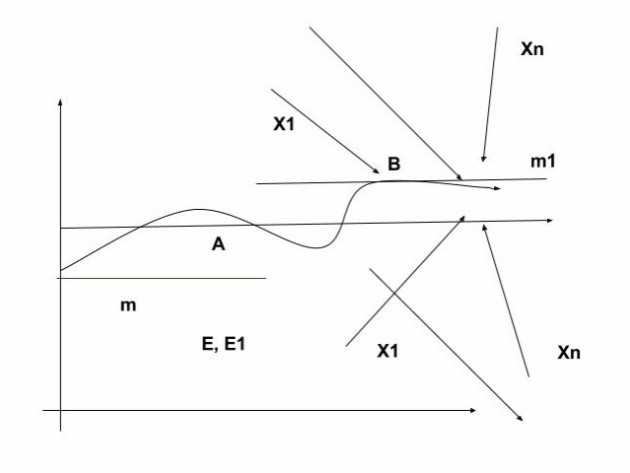
m,m1 – Market Leap
X-Xn – Market Tools as parameters applying pressure on Demand and Supply simultaneously
A – the existing entropy, business activity seasoned into equity (micromarket balance)
B – the succeeded entropy, business activity seasoned into equity (micromarket balance)
The idea of using principles from Quantum Mechanics to balance markets is simply emulating from the uncertainty, complexity, and volatility of global markets under interweaved trade, investment, and balances. The global markets necessity of accelerated Market Development to alleviate poverty by employing environmentally friendly approaches is a must; therefore, to avoid or postpone Market Economics’ implementation in time is incomprehensible, such will lead to Earth destruction and the end of Humankind.
What is important to be considered:
1. The diversity of Global Markets i.e. Economies actual conditions requires accommodative usage of Market Tools. However, the Global Markets must play under the same Rule of Laws in Business, Environmental Protection, Consumer Protection, Insurance and Bonding, and a few other Market Agents explained in my Research;
The ‘Invisible Hand’ must be used by Central Banks (individually for countries) and International Financial Institutions (globally) to plan and implement Market Leaps and flexible usage of Market Tools on Macromarket level to prevent from harmful volatilities;
no industrialization be targeted but the individual to markets specifications: geographical, landscape, traditions, possibilities to be set for development by saving the environment and identities;
The modest (up to 2%) inflation used in current economics to keep economic growth is based on the relatively high lending rates in a high-risk marketplace. In Market Economics it is all about steady (in the low 0.5 of 1%) Inflation/Deflation that self-adjust micromarket variances both ways: 1. it uses slight inflationary variances to allow businesses and investors some leverage in generating profits when 2. deflations cut down on micromarket level on redundancies and dead-meat exaggerations. Such very modest leverage is possible in a low-risk lending environment, only! The low Inflation/Deflation’ variances are straightly connected to the low lending rates of the low lending risk of high market security.
Market Tools such as Social expenses including educational, medical, retirement, social security, etc are in certain percentage Equitable (used as Market Tools) to balance markets; same are the Infrastructural expenses; however, Social expenses differ from the Infrastructural ones by the Equity they build: from one’s side it is Human wellbeing necessary to alleviate poverty and keep market balance from another it is Equity of Environmentally friendly Infrastructure that will give the opportunity to boost Entropy: business activity, employment, investment why saving Earth by keeping Earth livable!
Market Economics relies on SME (Small to Medium Enterprises) and Investors to provide the majority of jobs why on large transnational corporations and investors to retain the possibilities for Market Leaps and Market Development on a Global scale without Inflations.
Some Markets i.e. Economies need more Social Expenses than others reflecting the current Economic Policies, therefore the approaches used by Market Economics differ from Market to Market, as mentioned before. However, the principles are about Market Development under relative market balance of an ‘as it comes; as it goes’ Market Economics with no strings attached to any ideologies or principles: more or like ‘the ends justify the deeds’ and the ends are full employment (down to 1%, business opportunities, growing Social stability and building Infrastructure all in synchro with protecting Earth!
Micromarket of Market Economics entirely rely on the market competition to set pricing and quantities of goods and services; what the ‘invisible hand’ of Macromarket of Market Economics does is to target underdeveloped areas of a market to add some new competition into the Micromarket competition; example: a market could improve its vehicles park to a completely electric ones: using subsidies, low-interest lending, direct investment a Targeted Project finance the replacement without raising the existing expenses to the commercial drivers’ thus the market competition is not anyhow interrupted or intervened by giving some weight to different competitors. ‘Or let say an upgrade of the existing power generations is targeted: the procedures are the same as the previous example. Any additional jobs created with a new targeted project and the upgrade of the existing services, mechanics, installers through apprenticeships. Adding to the existing market competition must be done without disadvantages to any parties but through open competition.
The balance between the Micro and Macro levels can be sustained by always being sure to target the right segments by using open Market Tools accessible to all participants thus from one side maintaining fair competition and from another by not intervening into any competitive advantages succeeded by better management of some businesses. In practice the Central Bank, International Financial Institutions by using Commercial Banks on setup matrix boosting targeted market segments to accelerate and maintain business, employment, infrastructure: Market Development.
The depoliticization of Market Economics, individual freedoms, and democracy along with the implemented Market Agents of strict Environmental Protection Laws, Business Laws, Insurance, Consumer Protection, and etc. must ensure relative high Market Security that improves the market competition’s quality; thus the Marx’s pro-Supply theory’from quantity aggregation to quality improvement’ is avoided: because such theory does not prevent from pollution: it is based on industrialization. Or the idea of Adam Smith that the economic system is automatic, and, when left with substantial freedom, able to regulate itself. Obviously, working its best when the least regulations and flexible business jurisdiction, that also projects economies’ industrialization based on a trickle-down approach is enhanced in Market Economics to not rely on just industrialization and trickle-down approaches. or Debt: Debit/Credit restrictions. The necessities that overwrite such approaches and restrictions are related the absolutely needs to avoid Earth Pollution calling for changes by avoiding industrializations of the 20th Century like, and the lawlessness of the deregulated business that gives the opportunities to the large transnationals and investors to expand their activities globally, always looking for fewer restrictions on pollution, consumer protection, business laws thus in many cases promoting corruption and one-sided justice that benefited mostly them. The world of lawlessness the 20th and before centuries approach must be over as the priorities have changed from the pro-Supply liberalism based on limitless industrialization to a pro-market balance Market Development of environmentally friendly business and full employment to alienate poverty and poverty-driven pollution.
Joshua Ioji Konov 2018



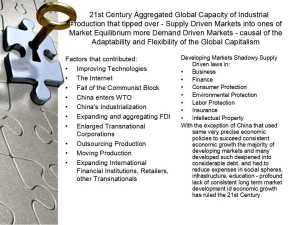
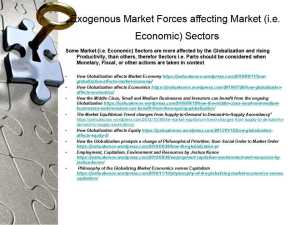
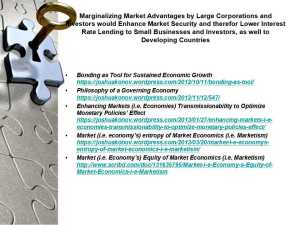
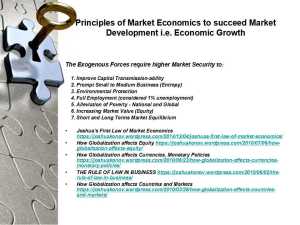

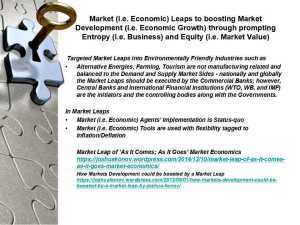


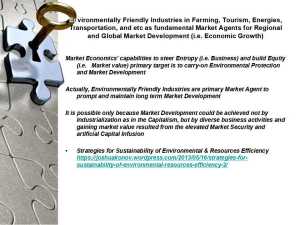
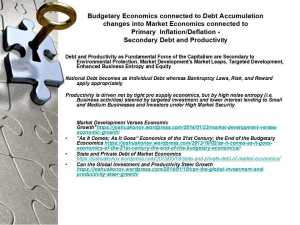
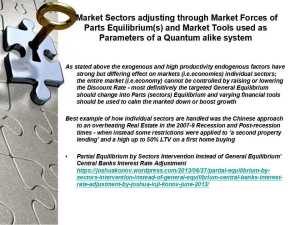
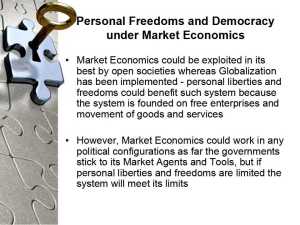

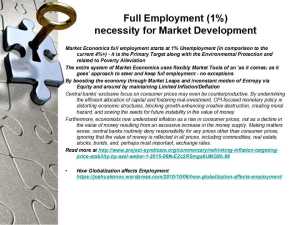
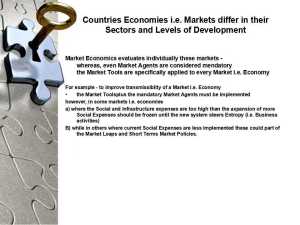

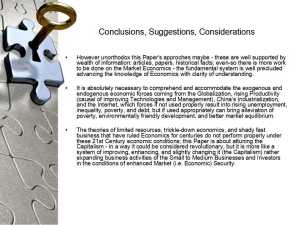
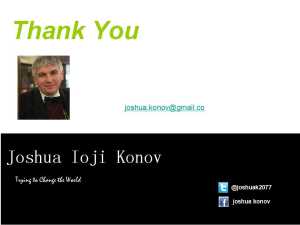
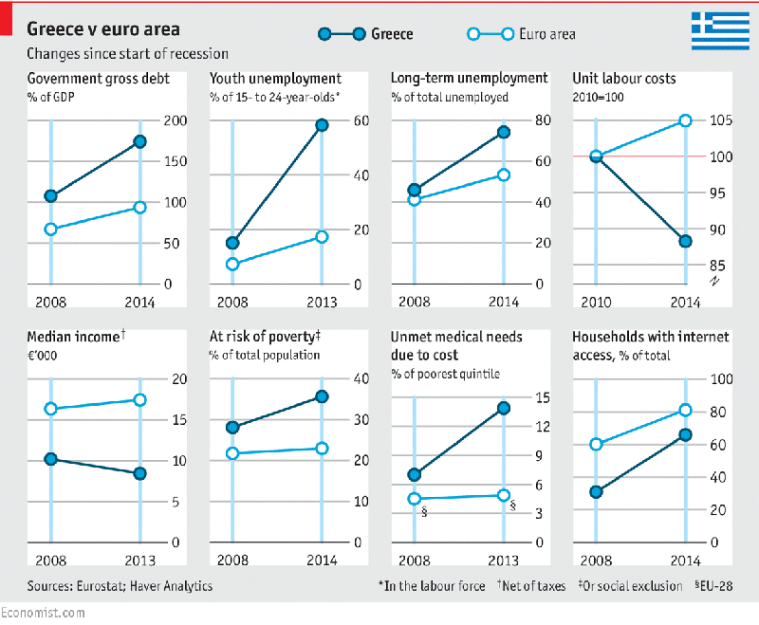
Recent Comments